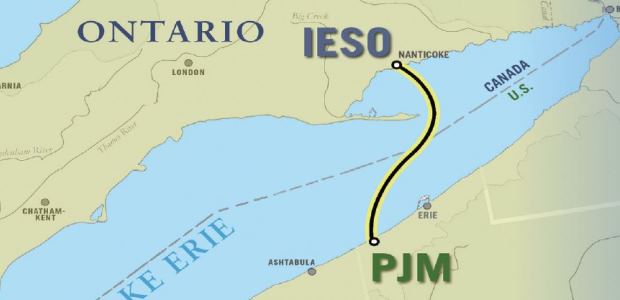
Canadian Government Approves Lake Erie Connector Project
The proposed 73-mile HVDC bi-directional transmission line between stations in Erie, Pa. and Nanticoke, Ontario, received a Presidential Permit from the U.S. Department of Energy in January 2017.
Canada's minister of natural resources, Jim Carr, announced that the Canadian government has approved the National Energy Board's decision to issue a certificate for the Lake Erie Connector Project, subject to 42 binding conditions. ITC Lake Erie Connector LLC's project will help to boost the trade in electricity between Canada and the United States. Canada's portion of it is $544 million; the project is a 1,000-megawatt, two-way underwater transmission line stretching about 73 miles under Lake Erie -- to provide the first direct electricity link between the markets of the Ontario Independent Electricity System Operator (IESO) and PJM Interconnection, LLC. The project is expected to be in service by 2020.
When ITC Holdings Corp., the largest independent electricity transmission company in the United States, announced in January 2017 that it had received approval of a Presidential Permit from the U.S. Department of Energy for the transmission line -- a DOE Presidential Permit is required for international border-crossing projects -- the company said it will improve the reliability and security of the U.S. and Canadian energy grids.
"This is a significant step in our development of the ITC Lake Erie Connector, and we appreciate the DOE's judicious response to our application,” said Terry Harvill, Ph.D., president of ITC Grid Development. "This project would provide a direct, efficient and controllable path for energy and capacity to flow between the PJM and IESO systems. By facilitating the import and export of energy between the U.S. and Ontario, the line can help optimize renewable resources and satisfy renewable energy requirements in the U.S. In addition, the Lake Erie Connector would help improve the security, reliability, and capacity of these energy grids."
The Canadian government had announced in January 2016 it would use an interim approach to guide decisions on major projects undergoing an environmental assessment while a longer-term review of environmental and regulatory processes is underway. The Lake Erie Connector Project was assessed using the interim approach.
"Canada is a country with a wide range of natural resources and as we move to a low-carbon future, electricity will have an increasingly larger role. Projects like the Lake Erie Connector Project are tangible examples of how Canada is demonstrating that the environment and the economy go hand in hand," Carr said.